A Way of Life in the USA
Hunting is a way of life in the United States, and we are here to help you be as successful on the hunt as possible.
The Ultimate Deer Hunting Equipment Checklist
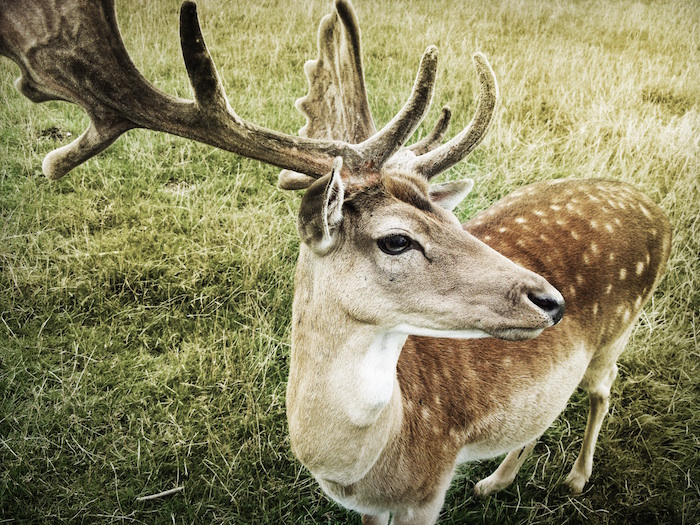 If you’re like most people, with a regular job, you may only get a few days to hunt deer every year. Because your time in the field is probably limited, forgetting one simple item can literally ruin your hunt. It is awfully difficult to hunt without a weapon! And even if you just forget something simple like a pair of gloves, or don’t pack quite enough food, the amount of enjoyment you get out of hunting will drop significantly. This is where a good deer hunting equipment checklist is invaluable.
If you’re like most people, with a regular job, you may only get a few days to hunt deer every year. Because your time in the field is probably limited, forgetting one simple item can literally ruin your hunt. It is awfully difficult to hunt without a weapon! And even if you just forget something simple like a pair of gloves, or don’t pack quite enough food, the amount of enjoyment you get out of hunting will drop significantly. This is where a good deer hunting equipment checklist is invaluable.
While you will need slightly different gear depending on whether you are hunting early or late in the season, using a bow or firearm, staying close to home or traveling across the country or are packing in or hunting close to the road, a good checklist will help you be sure you don’t forget anything you might need. It is suggested you go through all your gear at least a few weeks in advance of the season, so you will have plenty of time to secure replacements, if needed.
You can use the table of contents to jump to the section you’re most concerned about. Make sure to triple check the last item on the list, it is easy to forget but the consequences of doing so can literally be life changing!
Contents
Hunting Weapon(s)
Obviously, your choice of hunting weapon is not likely to be forgotten, but should be thoroughly checked over before the hunt.
Archery
Bow: Check your bow for any signs of wear or damage. Inspect the limbs, the cams and especially the string and replace anything that looks suspect.
Arrows: Aside from the arrows, or bolts, in your quiver, it is wise to have a few extras on hand.
Broadheads: Check fixed-blade broadheads for damage and be sure there is a sharp edge on each one. Inspect mechanical broadheads for any possible factory defects.
Broadhead Sharpener: It only takes one missed shot to dull a broadhead.
Small Game Head: This blunt rubber tip slips over the end of the arrow shaft and is perfect when that grouse perches up in a tree.
Archery Release: Unless you have time to practice every day, an archery release will improve your accuracy 10 fold. The release is designed to hold the bowstring at full draw and fire the bow with the push of a button.
Cocking Rope: If you hunt with a crossbow, a cocking rope is a must as cocking the bow by hand is not only hard on your arms and back, it can damage the bow.
Firearms
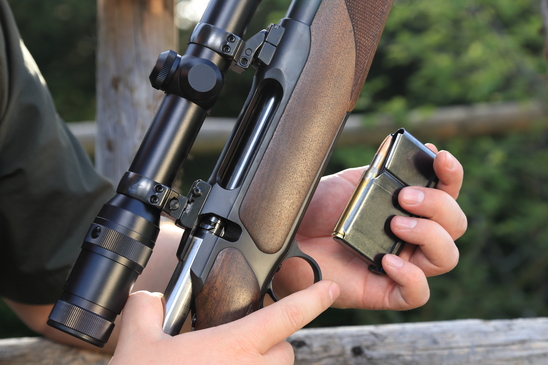 Weapon: Check your rifle, shotgun or handgun thoroughly and inspect the scope, if so equipped, to be sure a lens hasn’t mysteriously become cracked or a turret cap has gone missing. It’s always worth firing your weapon a few days before the hunt to make sure it has maintained its zero.
Weapon: Check your rifle, shotgun or handgun thoroughly and inspect the scope, if so equipped, to be sure a lens hasn’t mysteriously become cracked or a turret cap has gone missing. It’s always worth firing your weapon a few days before the hunt to make sure it has maintained its zero.
Sling: While your rifle or shotgun should be in your hands when stillhunting or tracking, a sling can help shorten the walk to and from the stand, or when dragging out.
Holster: If you use a handgun, be sure the holster is in good shape.
Scope Covers: It has been known to occasionally rain or snow in the deer woods.
Field Cleaning Kit: You never know when something will get stuck in your barrel, and a cleaning rod will work a lot better than a stick.
Hunting Clothing
Clothing needs can vary depending on latitude, altitude and weather. Layering several light pieces of clothing under your jacket will always keep you warmer, and drier, than a couple of heavy garments.
Insulated Parka: It gets cold in the woods, especially when sitting on stand all day.
Jacket: For early in the season when the temps are warmer, or when you plan to be on the move all day.
Windbreaker: Sometimes on even the nicest early-season day the wind can whip up out of nowhere.
Pants: Many hunters never consider a pair of warm and breathable hunting pants will aid in keeping their feet warm by helping to maintain the circulation to their feet.
Sweater: Dressing in layers allows you to add or take clothing off as needed.
Vest: A good hunting vest, with lots of pockets, will help you carry and organize and all your accessories. It will also keep you warm on the walk to the stand while carrying your jacket or parka, so you don’t get sweated up.
Thermal Underwear: Long underwear is a must to keep you warm, and to keep you dry it must have good wicking properties, like polypropylene.
Knit Cap: Approximately 10 percent of body heat is lost through your head, so a good knit cap will keep more that your head warm.
Cap with Visor or Brim: A good hat with some type of brim will help keep the sun, rain and the snow out of your eyes. You can wear this hat over your knit cap, if needed.
Facemask: The skin on your face is the most sensitive of anywhere on your body, so cover it up on those bitter cold days. Also, one of the most significant sources of heat loss in mammals is from repository function, and this is why dogs pant when they get hot. You can use the same process in reverse by simply wearing a mask that covers your mouth to prevent some of the heat from leaving your body.
Gloves: Even in mild weather, your hands are typically the fist thing to get cold. Be prepared with a pair of lightweight and a pair heavyweight gloves that are made from some type of wicking material, like polypropylene or wool.
Rain Gear: Having a packable rain jacket and pants or poncho is more than a luxury if you get caught in a downpour.
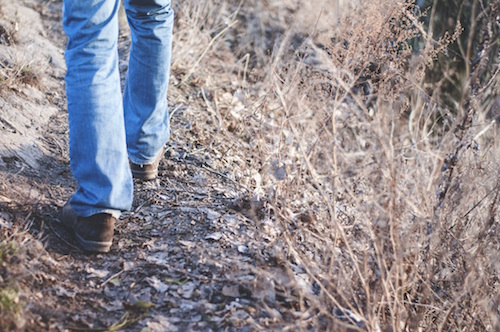 Boots: Your boots are one of the most important things you will wear. If you were boots that don’t fit well or aren’t broken in, you will be miserable on the hunt. Waterproof boots are a must, as you never know when you will have to ford a stream or river, or have to follow a buck into a swamp. In cold conditions, insulated boots will keep your feet warmer and boots with removable wicking liners work best. Read our guide to buying a great pair of hunting boots.
Boots: Your boots are one of the most important things you will wear. If you were boots that don’t fit well or aren’t broken in, you will be miserable on the hunt. Waterproof boots are a must, as you never know when you will have to ford a stream or river, or have to follow a buck into a swamp. In cold conditions, insulated boots will keep your feet warmer and boots with removable wicking liners work best. Read our guide to buying a great pair of hunting boots.
Extra Boot Liners: With an extra pair of liners you can start each day with dry boots.
Socks: Wear at least two pairs of socks; one lightweight cotton or polypropylene pair under a pair of good heavyweight wool socks will keep your feet warm, dry and help prevent blisters.
Casual Clothing: Unless you want to live in your hunting clothes, pack a sweatshirt and pants along with a jacket for doing camp chores.
Miscellaneous Equipment
Flashlight: Finding your way in or out of the woods, or tracking a deer, in the dark is always easier with light.
Spare Batteries: You never know when the batteries in your flashlight will run out. Always carry a spare pair.
Large Plastic Bags: Use to cover your gear, bow or rifle during an unexpected downpour.
Folding Saw: Use to clear shooting lanes and trimming branches from around your stand.
Small Radio or MP3 Player with Earbuds: Listen to music, talk shows or sporting events to pass the time on stand when the deer aren’t moving, or to relax in camp.
Tree Belt: A handy item with hooks to keep things like your rangefinder or binocos handy on the stand.
Personal Items: Lip balm, toilet paper, etc.
Pee Jug: A gallon milk jug or laundry detergent container will keep you from stinking up you hunting area with human scent. Fill it up during the day, pack it out and empty it when you get back to the truck.
Lady J: If you are a lady hunter, this handy little device is contoured to the shape of the pelvis. It slips inside your hunting pants and has a spout that sticks out the fly to allow you to go, into a jug, just like a guy.
Safety and Emergency Equipment
Safety while hunting should always be a priority. While most hunters will spend their entire hunting lives without incident, just one bad break could cut short a lifetime of enjoyment.
Safety Harness: The number one accident hunters experience is falling from a tree stand. Don’t be a statistic. Keep your knife handy in case of a fall and if, for some reason, you can get yourself upright.
Cell Phone: Not only is your phone your lifeline in an emergency situation, such as getting hurt so bad you can’t even walk or your car battery goes dead, you can call out for pizza if you don’t bring home the venison.
Fire Starting: In an emergency being able to start a fire can literally be the difference between life and death. A good butane lighter or waterproof matches with some cotton balls saturated with petroleum jelly will start a fire even in the rain. If you forget the cotton balls, a plastic credit card makes great emergency tinder, and may even help your financial situation in the process.
Survival Blanket: A space blanket can be a lifesaver if you get wet or have to spend the night in the woods.
Luggage
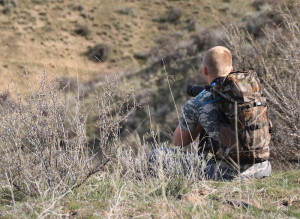 Backpack: Your pack needs to be the proper size for the type of hunting you will be doing. For some hunters, a small day pack may suffice. But if you plan on hauling meat in your pack, then you’ll need a much larger, sturdier pack. Check out our guide to hunting backpacks, which includes a section specifically for deer hunting.
Backpack: Your pack needs to be the proper size for the type of hunting you will be doing. For some hunters, a small day pack may suffice. But if you plan on hauling meat in your pack, then you’ll need a much larger, sturdier pack. Check out our guide to hunting backpacks, which includes a section specifically for deer hunting.
Duffel Bags: If you are headed out of town for an extended hunt you will need something to pack all your gear in. As a tip, rolling up your clothes, instead of folding, will allow you to fit much more in a bag.
Bow or Gun Case: These will protect your most expensive piece of hunting equipment in transit, and are a necessity if traveling by plane. Just be sure your case is FAA approved if you plan to fly commercially.
Toiletry Kit: A week in the woods will require a bit of hygiene, so you don’t spook the deer or your hunting buddies.
Hunting Accessories
Hunting Seat: Better than getting a wet and sore butt.
Handmuff with Warmers: Can be worn around your waist and keeps your shooting finger(s) warm and ready.
20+ Ft. Paracord: Used to raise and lower your gear from your tree stand.
Pack: A roomy waist or daypack to carry all your gear and extra clothing.
Deer Scent: Doe in estrus, for attracting the big guy during the rut, or a fox or skunk urine as a cover sent.
Scent Pads and Hanger: Hang scent pads from a tree or tie to drag behind your boots. If you don’t want to buy or carry a hanger you can just tie the pads to a tree branch with string or fishing line.
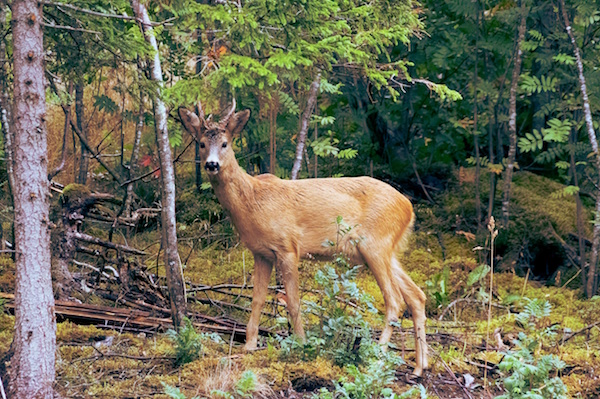 Scent-Killer Spray: Nothing stinks like human scents to a deer, particularly the smell of soaps, lotion, tobacco and other associated odors. Hunters support a gargantuan camouflage industry because humans are visually oriented. However, a deer’s nose it its primary defense. Spray scent killer on your boots and all your gear to kill human scent, both before and after heavy activities that cause perspiration. Spray some on a washcloth to use on the back of your neck, underarms and groin areas. Just as camo won’t make you completely invisible, scent killer won’t totally eliminate all human scent, but it will reduce it enough to keep from spooking the deer.
Scent-Killer Spray: Nothing stinks like human scents to a deer, particularly the smell of soaps, lotion, tobacco and other associated odors. Hunters support a gargantuan camouflage industry because humans are visually oriented. However, a deer’s nose it its primary defense. Spray scent killer on your boots and all your gear to kill human scent, both before and after heavy activities that cause perspiration. Spray some on a washcloth to use on the back of your neck, underarms and groin areas. Just as camo won’t make you completely invisible, scent killer won’t totally eliminate all human scent, but it will reduce it enough to keep from spooking the deer.
Baking Soda and Water: Carry a small bottle of baking soda dissolved in water to treat areas of your face where you may not want to use scent killer.
Deer Calls: You don’t have to carry enough grunt tubes to build a pipe organ, but every hunter should have one as a grunt can both call a buck in and stop him in his tracks for a standing shot. A doe bleating call can produce similar results. There are also some good all-in-one calls that can cut down on the number of calls you have to carry. A good pair of ratting antlers can make a cagey old buck come in to see who is fighting on his turf. If you don’t have access to a pair of real antlers for rattling, there are commercially-produced synthetic antlers, and bags with rods, that simulate a buck fight. Calls will work on all species of North-American deer, but are most effective on whitetails during the rut.
Tree Stand or Ground Blind: A tree stand will get you up and out of the deer’s line of sight and help you avoid his sense of smell. A ground blind is the next best option, if your not one for climbing trees. There are some great lightweight camouflage blinds that set up in a snap and will completely conceal you from your quarry.
Decoys: A doe decoy can make deer feel safer, increase their curiosity enough to get them to come take a look, or entice a buck to come in to breed the doe. A buck decoy can get a real buck to recklessly charge in for a fight.
Optics
Binoculars: Next to your gun or bow, a good pair of binos can be your most important piece of hunting equipment. Not only can it help you spot a deer at a distance, a pair of binoculars can help you evaluate the animal, determining if it is a buck or a doe, a “legal” buck in areas where there are antler-point restrictions, or a record-book rack if you are trophy hunting. A quality pair of binoculars can also help you tell the difference between an antler tine and a tree branch or a rock and the eye of a deer in thick cover.
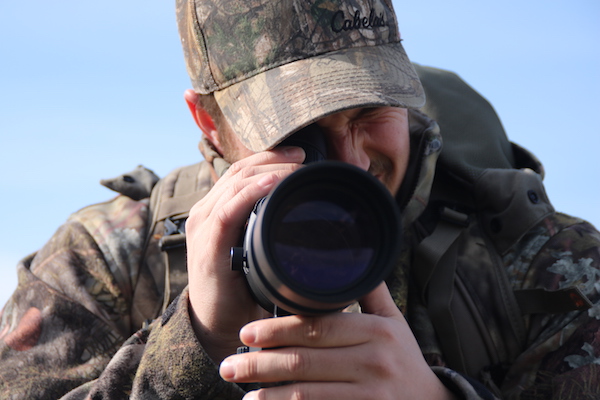 Spotting Scope: Almost a necessity when hunting the wide-open spaces of the west, a good 50X plus power spotting scope can help locate animals that you may otherwise never knew were there.
Spotting Scope: Almost a necessity when hunting the wide-open spaces of the west, a good 50X plus power spotting scope can help locate animals that you may otherwise never knew were there.
Range Finder: What may hunters think of as a luxury item can mean the difference between a missed shot and a filled tag. Range finders are made for both archery and firearm hunters, with the former indicating ranges up to 80 yards and the latter up to 1,000 yards. Without a rangefinder you may pass up a shot at an opportunity that you think is out of your effective shooting range, when it is closer than you think.
Unless you are intimately familiar with your hunting area, always have some way of finding your way out of the woods.
Compass: Not only can a compass help you get back to your vehicle, it can also help you locate your deer after the shot. Often that bush, rock or tree you could so easily identify from your lofty perch is not so clear once your are out of the tree. Take a compass reading on the last spot you saw the deer running before you climb down and once safely on the ground line the compass reading up with the base of the tree and start walking.
GPS: Many of the new Global Positioning Satellite devices designed for hunters are as small as a cellphone and are capable of storing enough data to make Hansel and Gretel envious. As long as you don’t loose it in the river, you will never be lost.
Food
Whether you are just out for the day or are headed to camp for a month, you need to fuel your furnace.
Water: The most crucial of all consumables when exerting yourself physically, running out of water on the hunt can literally be deadly. If you find yourself eight miles away from your truck/camp without water, and it is 80 degrees out, you’re in trouble. Use bottles or a hydration bladder, depending your preference, and pack more than you think you’ll need if you plan on doing a lot of hiking.
Lunch: Sandwiches are always ready when you are, or, if you have a way of heating water, a cup of instant soup or chili at midday can really lift your spirits. Balanced nutrition is key to sustain the physical exertion from hunting, make sure you are getting a good balance of protein, carbs, and fats.
Snacks: Fruit, energy bars, jerky, or nuts will keep your stomach from growing between meals. Trail mix is of course the classic hunting snack.
Thermos: A vacuum bottle of coffee, hot chocolate, tea or soup will keep you warm and cheery all day, and will mean not having to heat water for that soup at midday. Thermoses come in sizes from a pint to two quarts, so you can carry as much as you want or as little as you need. As a tip, stick to decaffeinated beverages as much as possible, so you won’t have to tinkle as often.
Menus: If you are going on an extended outing, you will need to plan out a menu for each day you will be gone. Unless you are camping next to an all-night diner, breakfasts, lunches, dinners and snack must all be accounted for. Take your time and sit down and think about what you want to eat for the duration of your trip. Just be sure to have enough fat and carbohydrates to give your body the energy it needs to trek through the woods all day. Canned, dehydrated and powder foods, like pasta, rice, spaghetti sauce and powder milk, will keep the best.
Ice Chest: Great for packing all your food, and if you camp by a creek you can use the unending supply of cold water, or ice of its cold enough, to keep your vittles chilled.
Utensils: Knives, forks, spoons, mugs, dishes, pots and pans, a dish tub and dish towels, so you don’t have to eat with your fingers.
Camping Equipment
Tent: If you are camping by yourself a small one or two-person tent is sufficient. For larger groups, a wall tent will keep everyone comfy and even give you space to cook your meals.
Sleeping bag(s): Be sure your bag is rated for at least 10 degrees colder than the lowest temperature you expect on the trip.
Sleeping Pads or Air Mattress: As the saying goes, an inch of insulation on the bottom is worth six inches on top. Closed-cell foam pads are thin, lightweight and great for insulating, but aren’t the softest for sleeping on. However, these work best when packing in away from the road, such as in the wilderness areas of the west. When space and weight is at an issue, an air mattress hard to beat.
Camp Stove and Fuel: A simple two-burner camp stove can cook your meals and double as a heater for your tent. A large bulk propane tank with a regulator hose will be more economical that buying small disposable bottles of propane at the discount mart.
Packing Out
Depending on where you are hunting, and the law, you may only need a knife and a rope to drag out your deer, or you may need to butcher it down to the bone on the spot.
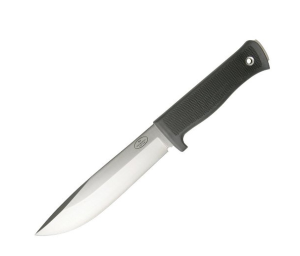 Hunting Knife: A good fixed blade or folding knife to dress your deer. A high-quality folding knife can have some advantages over a fixed blade, often having two or three blades for different jobs, such as a standard blade, a gut hook and a saw blade. However, a fixed blade knife will be able to handle much more punishment.
Hunting Knife: A good fixed blade or folding knife to dress your deer. A high-quality folding knife can have some advantages over a fixed blade, often having two or three blades for different jobs, such as a standard blade, a gut hook and a saw blade. However, a fixed blade knife will be able to handle much more punishment.
Rubber Gloves: Will keep your hands clean of blood, and protect you from any diseases the deer may be carrying, during field dressing.
Plastic Bag: Large enough to hold the liver, heart and kidneys, if you save the organs.
Bone Saw: If you need to quarter your deer in the field.
Six-Foot Drag Rope: Better than having to pull the deer all the way back to your truck by its antlers.
Small Bock and Tackle: A couple of small double pulleys and 30 feet of paracord will allow you to get your deer up and off the ground all by your lonesome.
Orange Surveyor’s Tape: Use to mark a lost blood trail or the way back to your deer, should you have to leave it in the woods overnight.
Deer Tag: You know why you need it, just be sure you don’t forget it, or the game warden won’t be your biggest fan.
